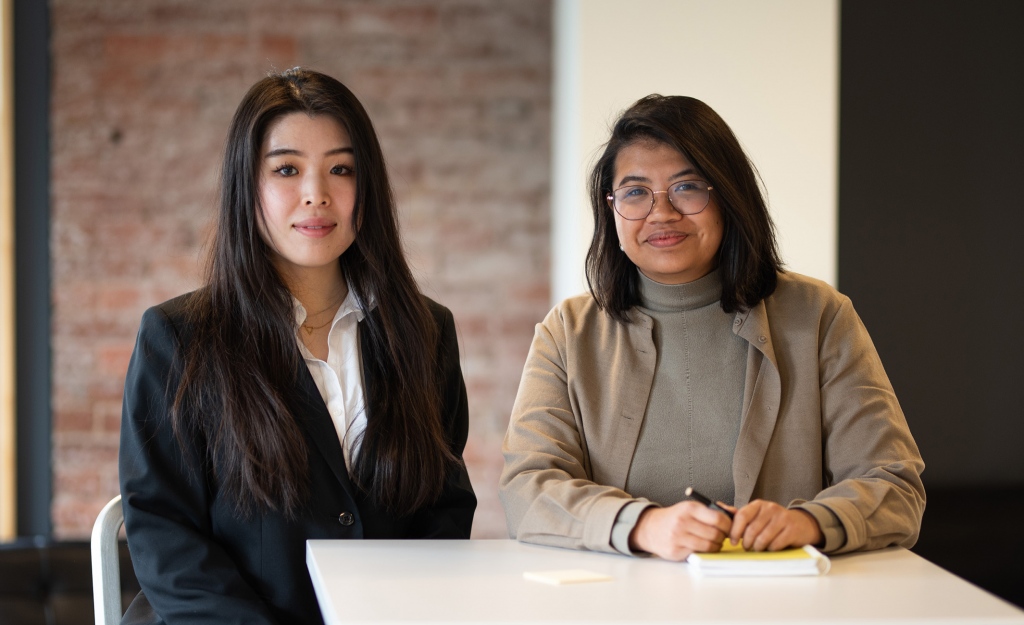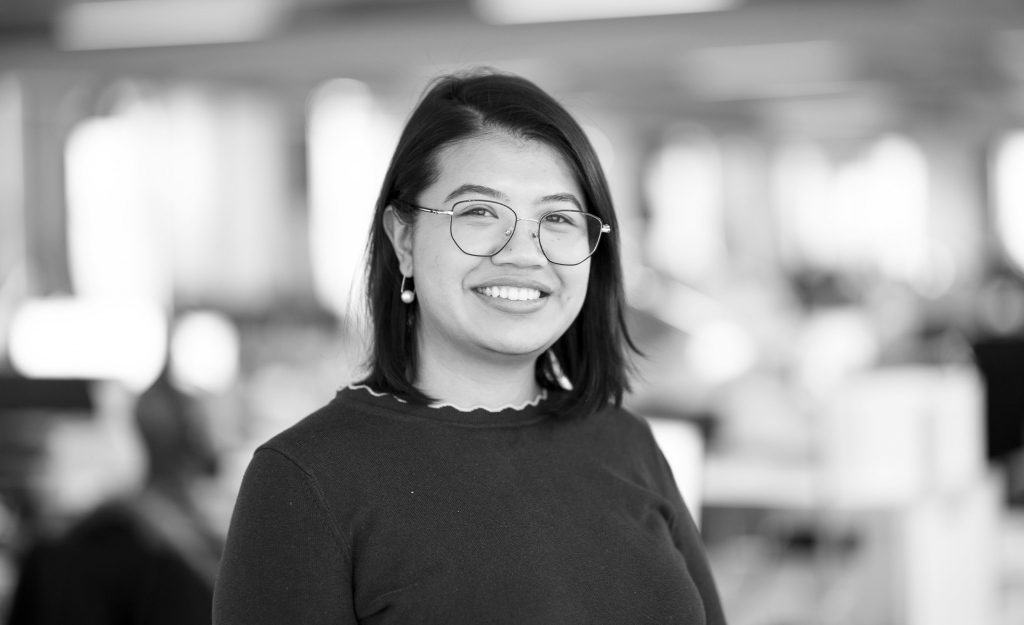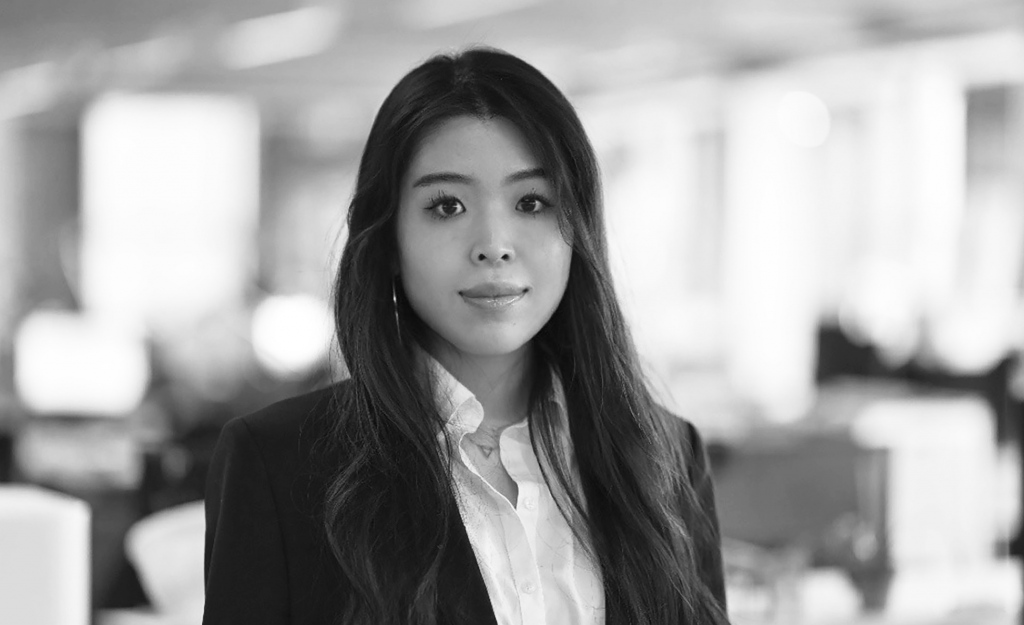
Women in Design (WiD) serves to promote the professional development and advancement of women at PAYETTE through regular dialogues that encourage teamwork, collaboration and learning in an atmosphere of collegiality. The group includes women professionals with all levels of experience, in all roles, who come together for discussion, fellowship and exchange of design and professional ideas. The primary goal of the group is to provide a forum for professional interests and common concerns in order to advance the professional careers of women in the firm.
Meet Shreeya Shakya and Yoko Furuya, our newest co-chairs.
Shreeya Shakya

What drew you to become a WiD co-chair?
As a young designer, I have always relied on the support system of mentors and colleagues to navigate my experiences and continue to grow (and I count my co-chair Jess as one of them!). I am drawn to WiD as a platform to create visibility and to cook up more opportunities where mentorship and networking can foster throughout the office.
If you could eat lunch with one architect, living or deceased, who would it be?
To just choose one, I would love to have lunch with Minnette de Silva and talk about what inspired her. A contemporary architect I would like to have lunch with is Summaya Vally from Counterspace – I just think she is so cool and would love to hear her reflections on the present and her ideas about the future.
How do you think the opportunities for women in architecture are changing?
It is important to acknowledge the profession is in a different place than it was even 20 years ago for what it means to be a woman in architecture. There is a lot that is being put into question as we move towards equity, but I would like to believe we are doing so with more agency. I think this is an exciting time where architecture is evolving very fast giving us an opportunity to define for ourselves how we can be more inclusive, intersectional and accessible.
Where do you draw your inspiration from?
I get abundant inspiration from the creative people around me and the environments that I find myself in. I also have a lot of appreciation for craftsmanship of all sorts – the attention to detail, the practice and care that goes into creating something – it is really how I like to approach my design. Recently I have been inspired by pottery and embroidery – both slow patient arts.
The sky is the limit: what is a structure or system that you would redesign?
I would redesign city I grew up in – Kathmandu.
What do you do in your free time?
I paint with acrylics, and I practice my violin. The violin is something I picked back up during COVID after years of being out of practice – I am still a beginner but learning how to play instruments brings me a lot of joy.
Yoko furuya

What drew you to become a WiD co-chair?
Reflecting on Women in Design’s achievements over the years, I realized that Women in Design accomplished projects using digital fabrication tools collaborated with different divisions, and provided opportunities for self-improvement for female employees through events such as discussion sessions. These accomplishments excite me and drive me to be a part of the organization to continue to contribute to and guide the PAYETTE community.
I have been involved in Harvard Quantum Initiative at 60 Oxford projects during my professional career at PAYETTE, but outside of this, I also have spent a significant amount of time in the Living Cycle Analysis research group generating the Kaleidoscope Tool and designing and collaborating with manufacturers to make costumes for Fashion Show. Under the leadership of female employees in these groups, we had various achievements and were recognized in the field. My experience with these groups drove my passion for collaborating with people to find solutions to overcome obstacles and is ultimately what motivated me to proactively contribute to the PAYETTE community.
If you could eat lunch with one architect, living or deceased, who would it be?
I am intrigued by the craftsmanship of Miyadaiku, who were carpenters who specialized in building shrines and temples in ancient times. I am amazed by their ability to design and construct wooden joints and structures that are both visually stunning and functional. It is incredible that Japan, a country that experiences frequent earthquakes, has the oldest surviving wooden building in the world at Horyu-ji in Nara Prefecture. I would love to learn about the Miyadaiku’s techniques and procedures, as well as how long it took them to construct such beautiful and durable temples and shrines using only the tools and technologies that were available to them at the time.
How do you think the opportunities for women in architecture are changing?
I believe that opportunities for women in architecture are improving. In my experience working on the Harvard Quantum Initiative project at 60 Oxford, I have had the chance to visit construction sites regularly as a young designer for observation and to ensure that everything is up to standard. During one of these visits, I was accompanied by my female supervisor and colleagues when we met some female construction workers who expressed their joy and support for us working in the field. It was a heartwarming moment that made me feel that there is a significant change happening in both architecture and construction.
Where do you draw your inspiration from?
I usually get inspiration from talking to people in the office or walking around the alcove area. Many PAYETTE project teams make hand-drawn sketches over trace paper, which I find valuable. I believe the “quick sketch” that we do daily is a gleam of intelligence. Whether those sketches are coming from designers of all levels, seeing quick sketches over trace paper is the first step to the core design process and I find it helpful to draw my inspiration from.
The sky is the limit: what is a structure or system that you would redesign?
Japan is currently facing a serious issue of a declining birth rate and an aging population. This problem is expected to worsen in the next two to three decades. Many young people tend to migrate to big cities like Tokyo because these areas offer better transportation systems, schools, and more job opportunities. However, if this trend continues, it will result in a population imbalance that can cause several issues. For instance, disparities in wealth could potentially lead to an unstable society with a decline in public security. To address this problem, areas that are facing a declining birth rate and an aging population could focus on creating a better educational and parenting environment for both children and parents. These areas often lack nurseries, kindergartens, and public parks, which makes them less appealing places to raise children. Adding these elements to such areas could be a step towards revitalizing the region with a declining birth rate and an aging population.
What do you do in your free time?
I usually listen to my favorite songs and stroll around the Cambridge area. I also love to hang out with my PAYETTE people outside work hours. We get drinks, cook meals together at each other’s apartment, sometimes sing a song, make something precious, and have fun!

